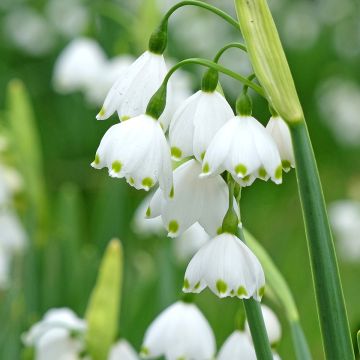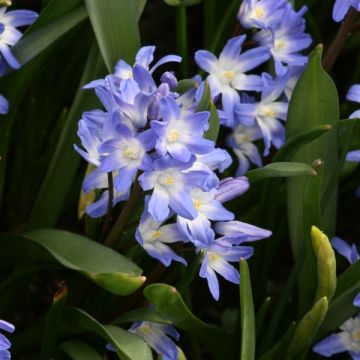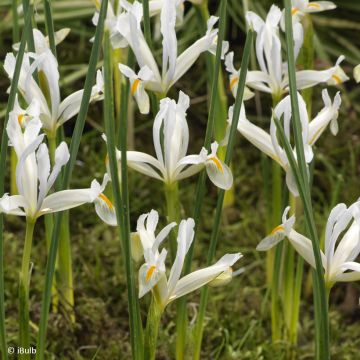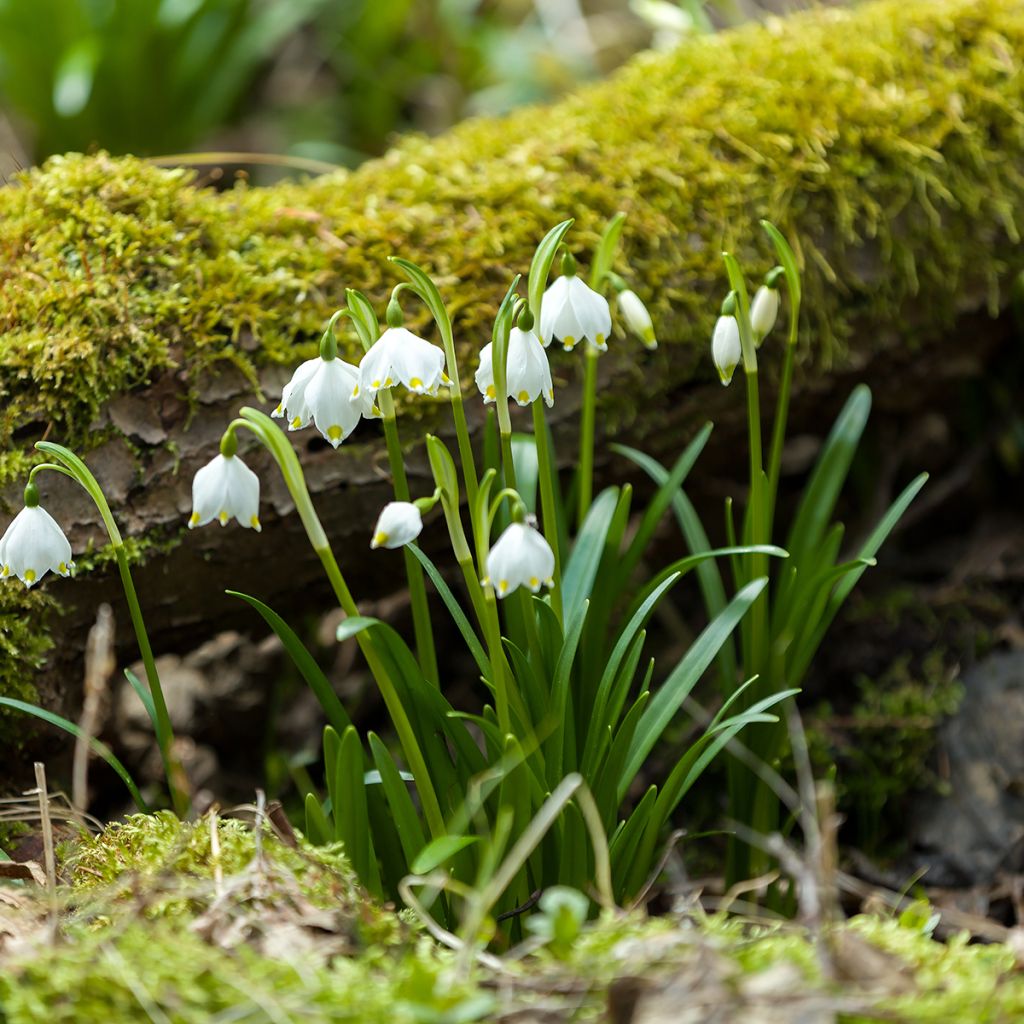

Leucojum vernum - Spring Snowflake


Leucojum vernum - Spring Snowflake
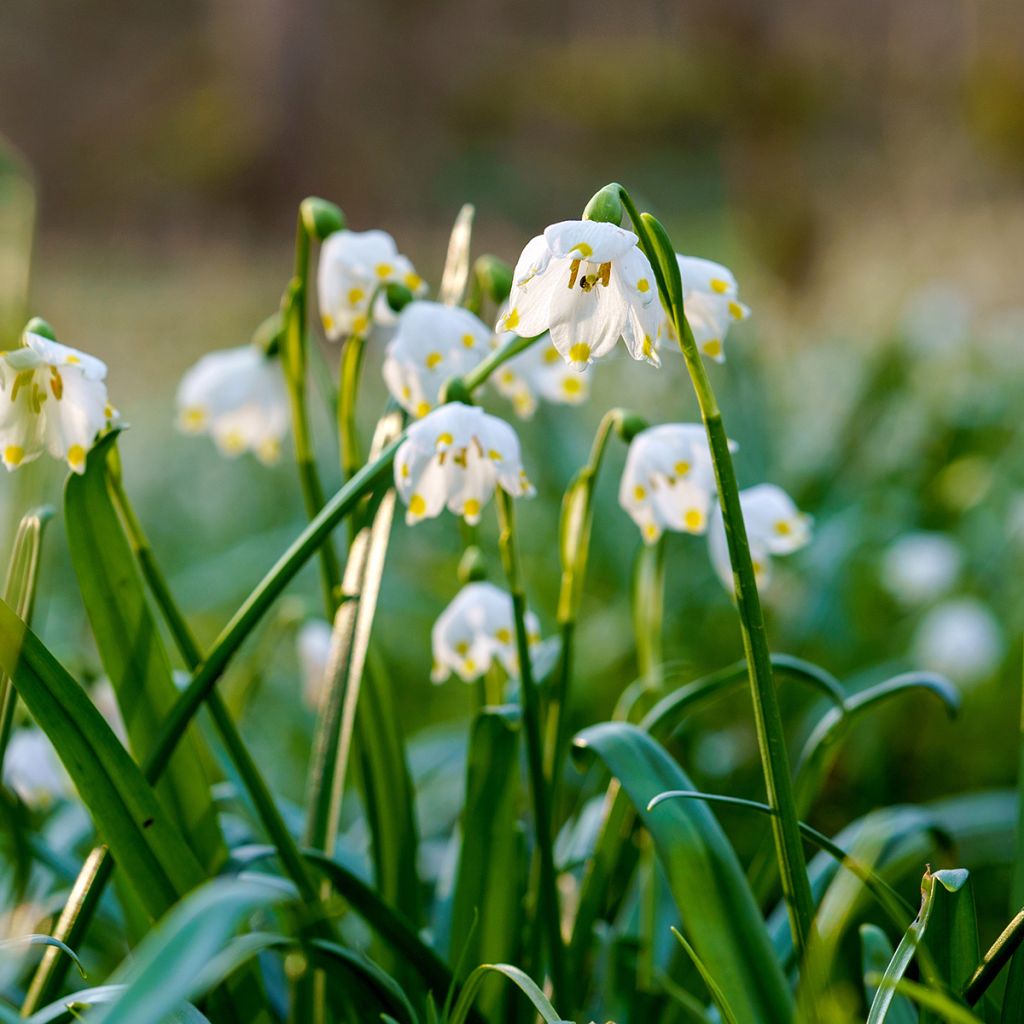

Leucojum vernum - Spring Snowflake
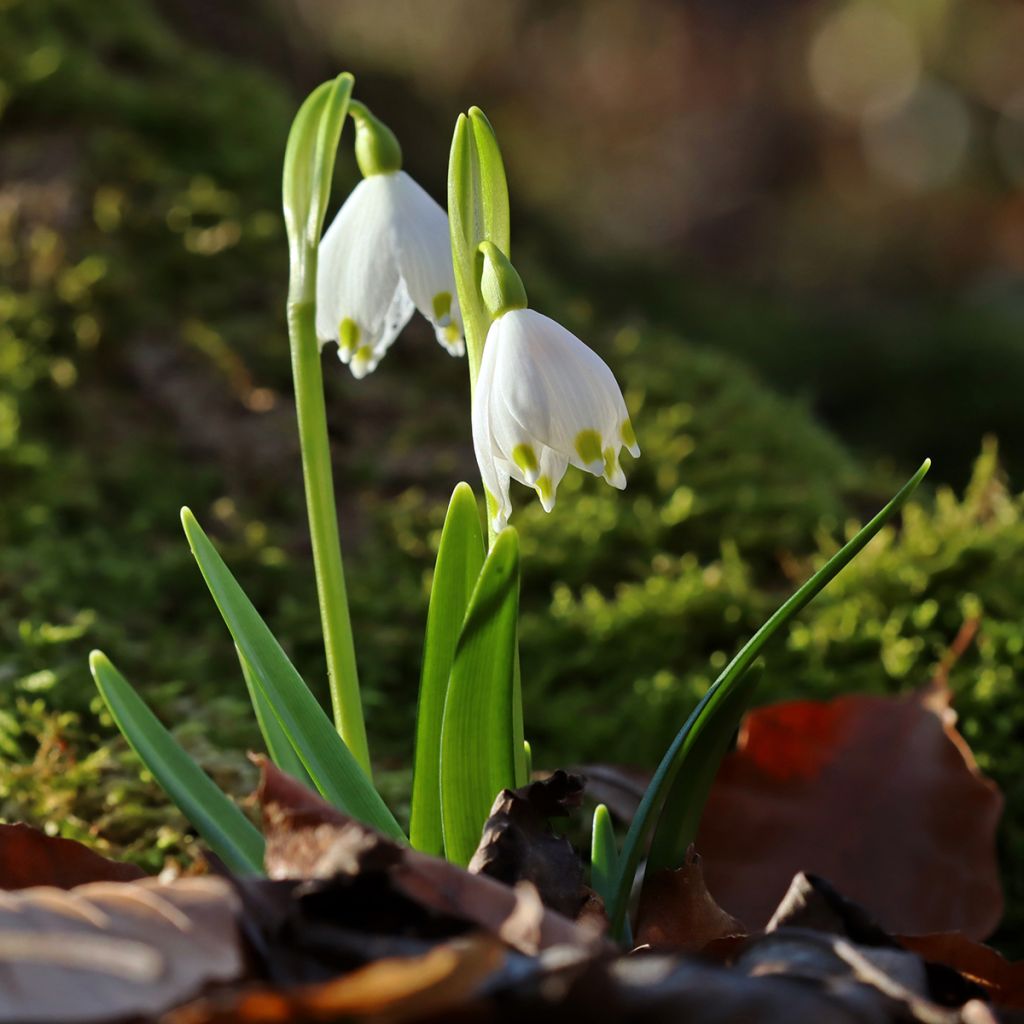

Leucojum vernum - Spring Snowflake


Leucojum vernum - Spring Snowflake
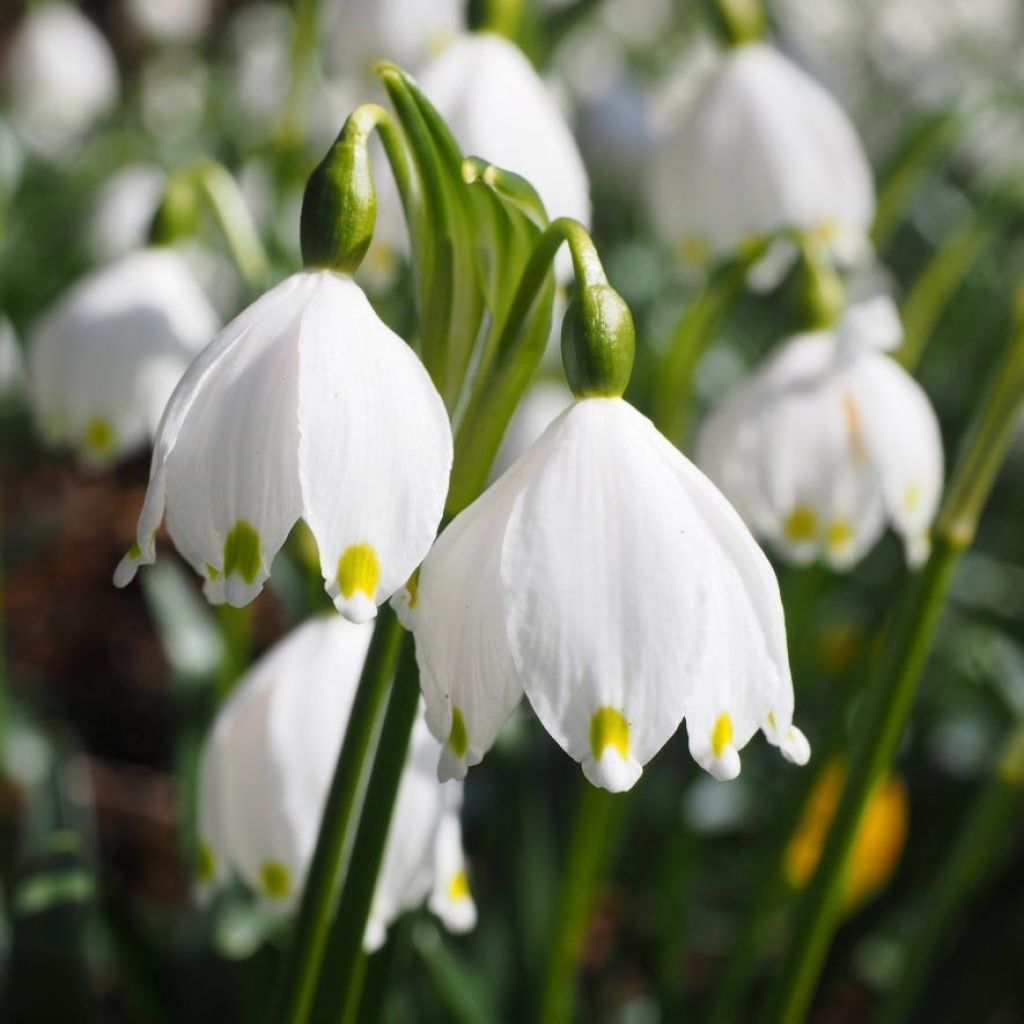

Leucojum vernum - Spring Snowflake
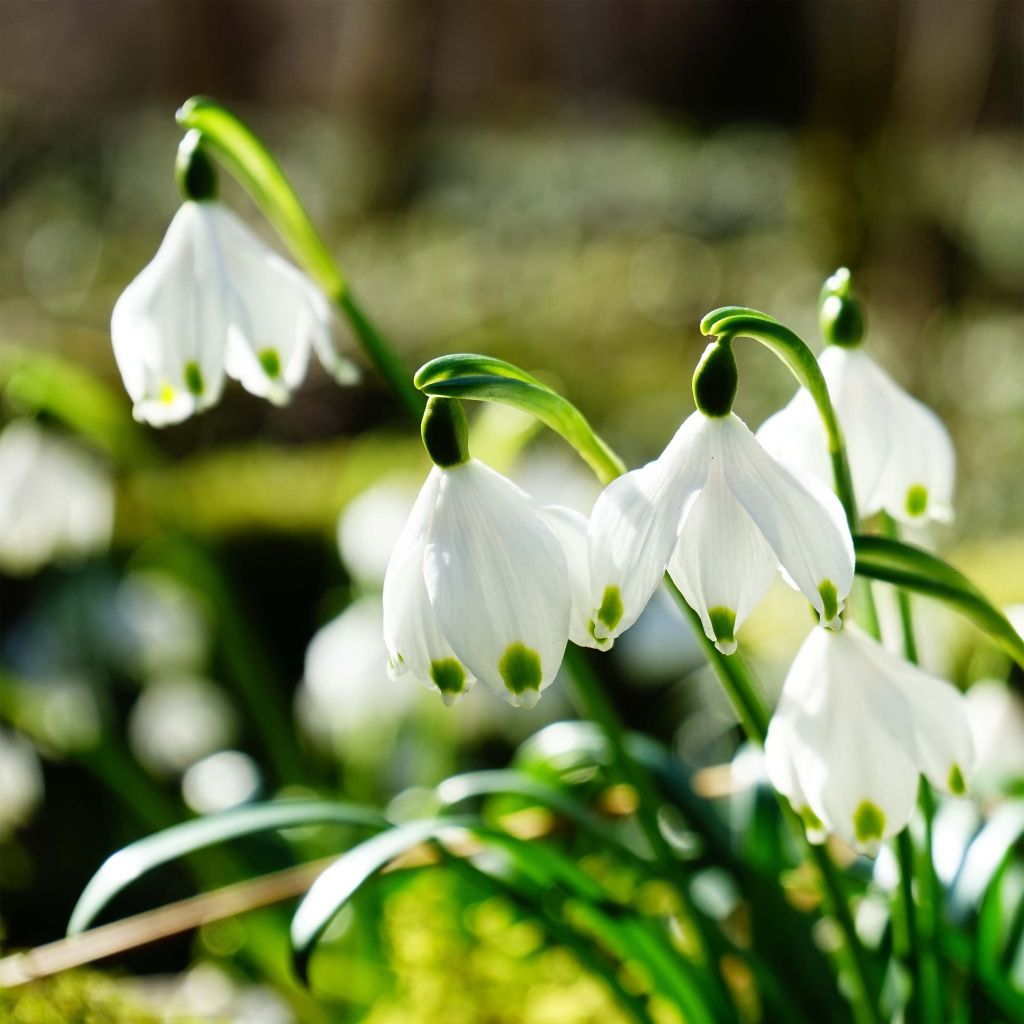

Leucojum vernum - Spring Snowflake
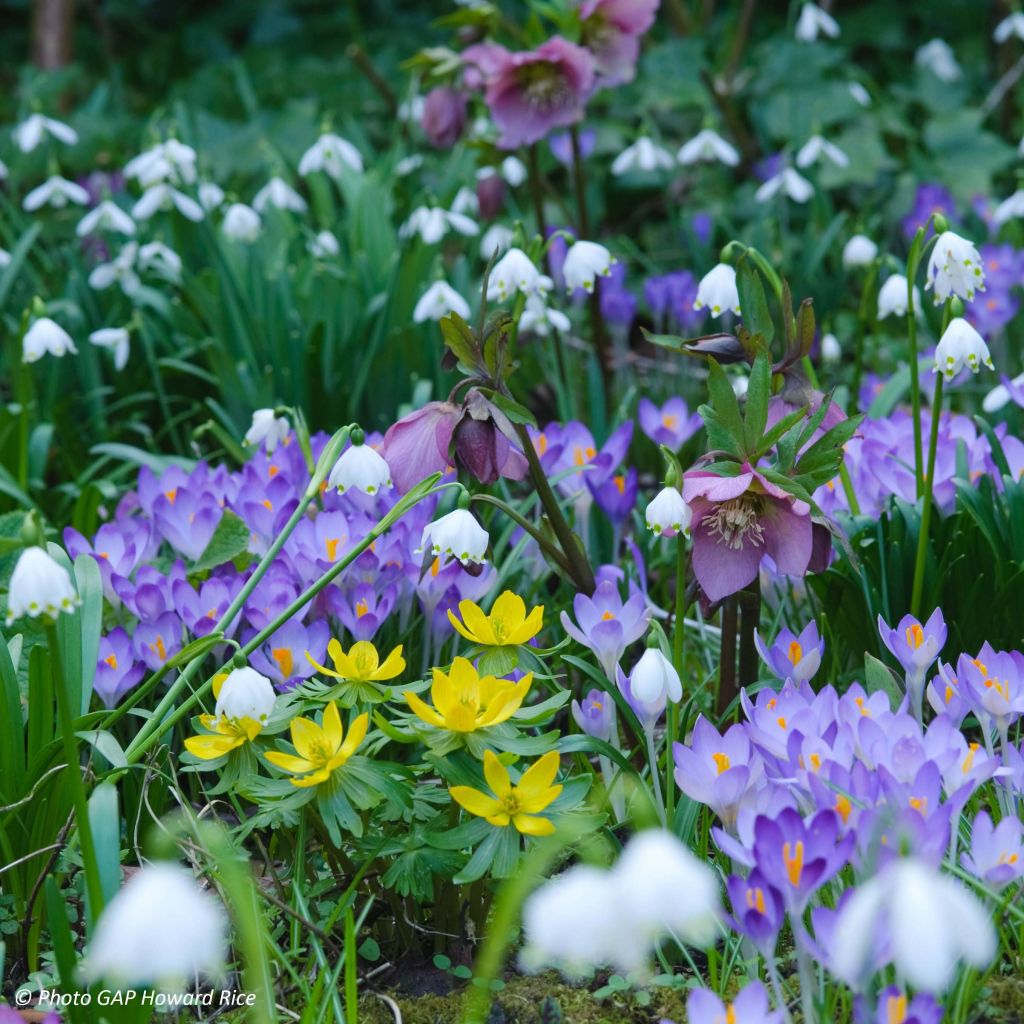

Leucojum vernum - Spring Snowflake
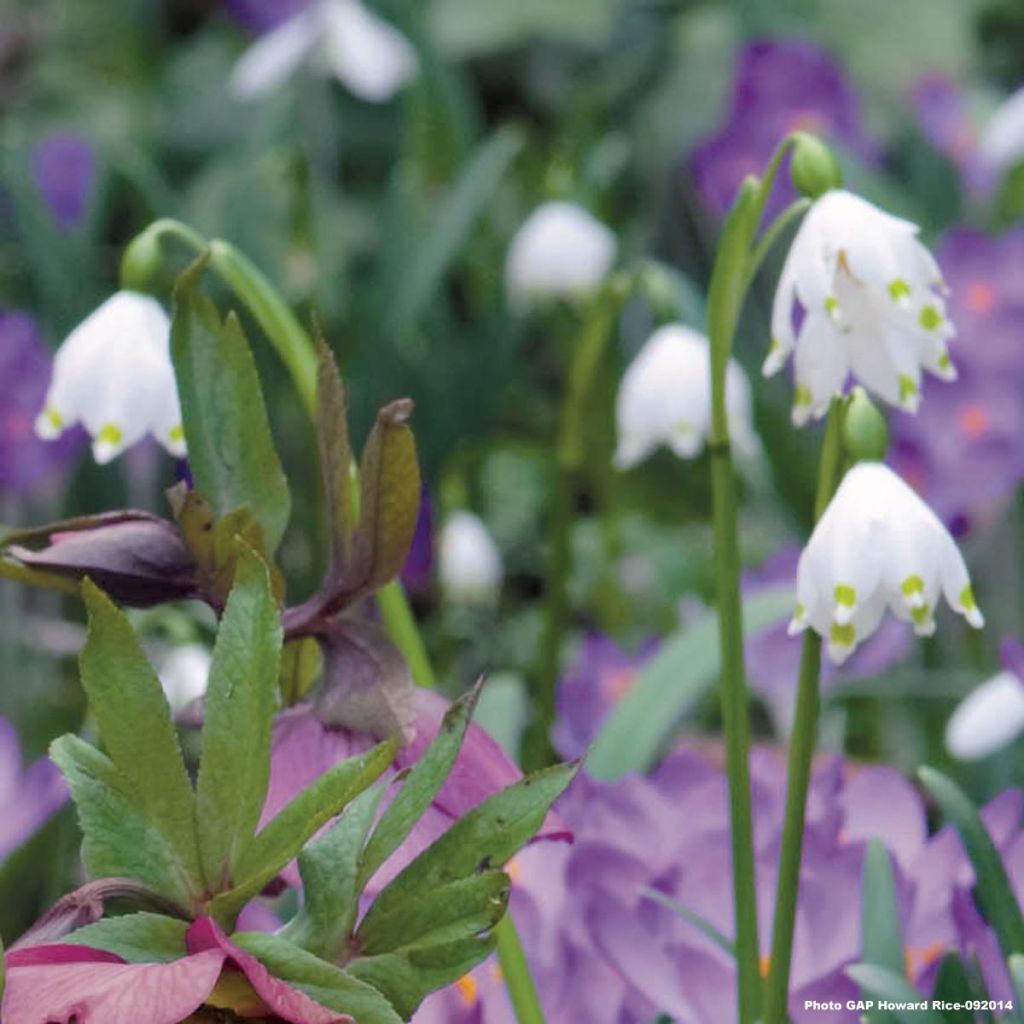

Leucojum vernum - Spring Snowflake
Leucojum vernum - Spring Snowflake
Leucojum vernum
Spring Snowflake
No snowflake bulbs have come out. I am disappointed.
Annie, 25/03/2024
Special offer!
Receive a €20 voucher for any order over €90 (excluding delivery costs, credit notes, and plastic-free options)!
1- Add your favorite plants to your cart.
2- Once you have reached €90, confirm your order (you can even choose the delivery date!).
3- As soon as your order is shipped, you will receive an email containing your voucher code, valid for 3 months (90 days).
Your voucher is unique and can only be used once, for any order with a minimum value of €20, excluding delivery costs.
Can be combined with other current offers, non-divisible and non-refundable.
Why not try an alternative variety in stock?
View all →This plant carries a 6 months recovery warranty
More information
We guarantee the quality of our plants for a full growing cycle, and will replace at our expense any plant that fails to recover under normal climatic and planting conditions.

Would this plant suit my garden?
Set up your Plantfit profile →
Description
Leucojum vernum, also known as the Spring Snowflake, is a bulbous plant related to the Snowdrop, with an early flowering of small pure white corollas enhanced by a touch of green on the edge of the petals. This botanical species, unknown or forgotten, is protected in some parts of Europe. It displays its graceful silhouette and linear foliage in waterlogged areas without fearing the summer drought that will simply make it disappear underground. Here is a modest but wonderful plant that will naturalize in the slightly wild areas of the garden.
The Spring Snowflake, also known as Claudinette, belongs to the Amaryllidaceae family and is native to central Europe. It is found in fresh deciduous forests such as alder-ash forests, oak forests, and beech forests, near hedges and in meadows, growing in rich, cool to wet, neutral or alkaline soil. This plant forms an erect clump, reaching a height of 40cm (16in) when in flower, 15cm (6in) for the foliage, and can spread over a significant area. Flowering takes place in February-March, after that of the snowdrops. The white flower, quite large (2 to 2.5cm (1in)), has six petals with prominent veins, ending in a green obtuse tip. The anthers are orange. The foliage consists of long, slender, erect, shiny, deciduous green leaves. The leaves disappear no later than May. It survives the summer and part of the winter in the form of a bulb.
Leucojum vernum is a plant that thrives in moist to cool conditions, preferring a sunny or semi-shaded exposure. It goes well with coum cyclamen, hellebores, and wild arum in the undergrowth. It can also be acclimated in a cool rock garden with crocuses, violets, Danford iris, and Algerian iris. Once established, it multiplies rapidly through spontaneous sowing.
Its bulbs contain alkaloids used in medicine.
Report an error about the product description
Leucojum vernum - Spring Snowflake in pictures
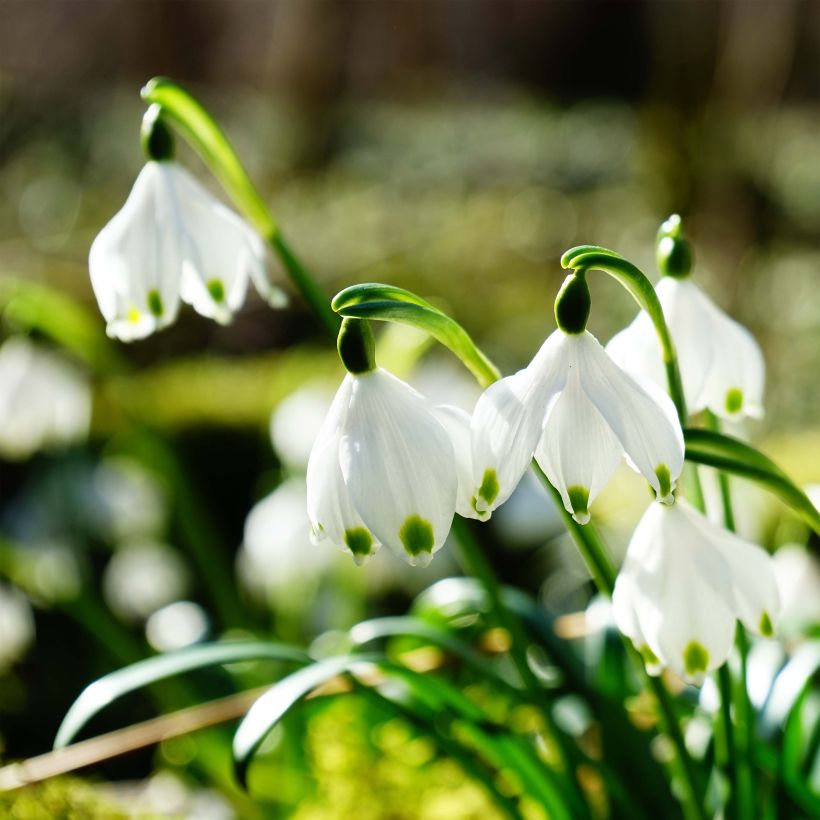



Plant habit
Flowering
Foliage
Botanical data
Leucojum
vernum
Amaryllidaceae
Spring Snowflake
Central Europe
Planting and care
Plant the Snowflake bulbs as soon as possible, from September to November. Plant them at a depth of 5cm (2in), spaced 5cm (2in) apart, in groups of at least 15 or 20. After that, the cultivation requires little care and we advise you to leave the clumps in place for several years. They will naturally proliferate. They can be divided after five years, just after flowering, and immediately replanted at a good spacing. Once acclimated and established, it quickly multiplies through spontaneous sowing. This bulbous plant does not require any particular maintenance.
Planting period
Intended location
Care
-
, onOrder confirmed
Reply from on Promesse de fleurs
Similar products
Haven't found what you were looking for?
Hardiness is the lowest winter temperature a plant can endure without suffering serious damage or even dying. However, hardiness is affected by location (a sheltered area, such as a patio), protection (winter cover) and soil type (hardiness is improved by well-drained soil).

Photo Sharing Terms & Conditions
In order to encourage gardeners to interact and share their experiences, Promesse de fleurs offers various media enabling content to be uploaded onto its Site - in particular via the ‘Photo sharing’ module.
The User agrees to refrain from:
- Posting any content that is illegal, prejudicial, insulting, racist, inciteful to hatred, revisionist, contrary to public decency, that infringes on privacy or on the privacy rights of third parties, in particular the publicity rights of persons and goods, intellectual property rights, or the right to privacy.
- Submitting content on behalf of a third party;
- Impersonate the identity of a third party and/or publish any personal information about a third party;
In general, the User undertakes to refrain from any unethical behaviour.
All Content (in particular text, comments, files, images, photos, videos, creative works, etc.), which may be subject to property or intellectual property rights, image or other private rights, shall remain the property of the User, subject to the limited rights granted by the terms of the licence granted by Promesse de fleurs as stated below. Users are at liberty to publish or not to publish such Content on the Site, notably via the ‘Photo Sharing’ facility, and accept that this Content shall be made public and freely accessible, notably on the Internet.
Users further acknowledge, undertake to have ,and guarantee that they hold all necessary rights and permissions to publish such material on the Site, in particular with regard to the legislation in force pertaining to any privacy, property, intellectual property, image, or contractual rights, or rights of any other nature. By publishing such Content on the Site, Users acknowledge accepting full liability as publishers of the Content within the meaning of the law, and grant Promesse de fleurs, free of charge, an inclusive, worldwide licence for the said Content for the entire duration of its publication, including all reproduction, representation, up/downloading, displaying, performing, transmission, and storage rights.
Users also grant permission for their name to be linked to the Content and accept that this link may not always be made available.
By engaging in posting material, Users consent to their Content becoming automatically accessible on the Internet, in particular on other sites and/or blogs and/or web pages of the Promesse de fleurs site, including in particular social pages and the Promesse de fleurs catalogue.
Users may secure the removal of entrusted content free of charge by issuing a simple request via our contact form.
The flowering period indicated on our website applies to countries and regions located in USDA zone 8 (France, the United Kingdom, Ireland, the Netherlands, etc.)
It will vary according to where you live:
- In zones 9 to 10 (Italy, Spain, Greece, etc.), flowering will occur about 2 to 4 weeks earlier.
- In zones 6 to 7 (Germany, Poland, Slovenia, and lower mountainous regions), flowering will be delayed by 2 to 3 weeks.
- In zone 5 (Central Europe, Scandinavia), blooming will be delayed by 3 to 5 weeks.
In temperate climates, pruning of spring-flowering shrubs (forsythia, spireas, etc.) should be done just after flowering.
Pruning of summer-flowering shrubs (Indian Lilac, Perovskia, etc.) can be done in winter or spring.
In cold regions as well as with frost-sensitive plants, avoid pruning too early when severe frosts may still occur.
The planting period indicated on our website applies to countries and regions located in USDA zone 8 (France, United Kingdom, Ireland, Netherlands).
It will vary according to where you live:
- In Mediterranean zones (Marseille, Madrid, Milan, etc.), autumn and winter are the best planting periods.
- In continental zones (Strasbourg, Munich, Vienna, etc.), delay planting by 2 to 3 weeks in spring and bring it forward by 2 to 4 weeks in autumn.
- In mountainous regions (the Alps, Pyrenees, Carpathians, etc.), it is best to plant in late spring (May-June) or late summer (August-September).
The harvesting period indicated on our website applies to countries and regions in USDA zone 8 (France, England, Ireland, the Netherlands).
In colder areas (Scandinavia, Poland, Austria...) fruit and vegetable harvests are likely to be delayed by 3-4 weeks.
In warmer areas (Italy, Spain, Greece, etc.), harvesting will probably take place earlier, depending on weather conditions.
The sowing periods indicated on our website apply to countries and regions within USDA Zone 8 (France, UK, Ireland, Netherlands).
In colder areas (Scandinavia, Poland, Austria...), delay any outdoor sowing by 3-4 weeks, or sow under glass.
In warmer climes (Italy, Spain, Greece, etc.), bring outdoor sowing forward by a few weeks.






























